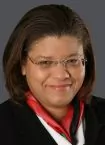Keywords: Bankruptcy Code, KB Toys Inc, Section 502(d)
In In re KB Toys Inc.,1 the US Court of Appeals for the Third Circuit affirmed the holdings of the lower courts that claims subject to disallowance under Section 502(d) of the Bankruptcy Code are "similarly disallowable in the hands of the subsequent transferee." According to the Third Circuit, when a creditor owes property to the estate, until that property is returned to the estate, that creditor's claim, regardless of who holds it, is impaired, and the subsequent sale of that claim cannot rid it of its impairment.
The Facts
After the debtor had filed for bankruptcy, the appellants (collectively, "ASM") purchased nine claims (the "Claims") from original claimants. Four of the assignment agreements documenting the purchases contained indemnities for claim impairment and the remaining five did not. All of the agreements contained restitution provisions that required the original claimants to pay restitution if their claim was disallowed.
All of the original claimants were listed on the debtors' statements of financial affairs ("SOFA"), which were publicly available, as having received payments within the 90-day period before the petition date. In furtherance of the plan of reorganization, the Trustee brought preference actions and obtained judgments against each of the original claimants. However, these judgments went uncollected because each of the original claimants had gone out of business. Thereafter, contending that each original claimant had received a preference before transferring its respective claim to ASM, the Trustee filed an objection to the Claims seeking disallowance pursuant to Section 502(d) of the Bankruptcy Code.2 The bankruptcy court agreed.3 The district court affirmed the bankruptcy court's decision and ASM appealed.
The Third Circuit's Analysis
The Third Circuit prefaced its decision with a look at the practice of, and risk allocations taken in, claims trading.4 The Third Circuit acknowledged the interests of the original claimants in selling, and the potential recoveries of the purchasers. Turning to the wording of Section 502(d) of the Bankruptcy Code, the Third Circuit asserted that the "issue in this case ... turns on the interpretation of the phrase 'any claim of any entity.'" Focusing on that phrase, the court found that it operated to encapsulate a category of claims that would be disallowable—namely, "those that belong to an entity that received an avoidable transfer."
The Third Circuit determined that Section 502(d) is not focused on the entity that holds the claim, but instead is focused on the claim itself. Accordingly, until the avoidable transfer that is tethered to the claim is returned to the estate, the claim may be disallowed without consequence or acknowledgement of who is then holding the claim. To hold otherwise, the Third Circuit found, would lead to "claim washing" and deprive trustees of one of their most persuasive asset recovery tools. Inoculation by transfer would inequitably reduce distributions to those creditors whose claims had never been subject to disallowance by (i) reducing the pool of recoverable assets and (ii) adding into the class of claimants, transferees who had purchased the now washed claims. Disallowance, the Third Circuit held, therefore, must run with the claim and stays with the claim until the preference is returned.5
After reviewing legislative history, which buttressed its holding, the Third Circuit looked at ASM, which it found to be "aware that disallowance could potentially attach to and travel with the Claims." By its actions—negotiating agreements with coverage for impairment and restitution upon disallowance—ASM showed that it had interpreted Section 502(d) in the exact same manner as the Third Circuit. As such, since ASM precisely understood the risks that it had taken in purchasing the Claims, its argument that it had purchased the Claims in "good faith" under Section 550(b) of the Bankruptcy Code could not be sustained. First, the protections of Section 550(b) of the Bankruptcy Code extended to purchases of property of the estate, and a claim against the estate was not property of the estate. Second, since ASM was in the business of purchasing claims, the Third Circuit believed that the risks of counterparty default and disallowance had to be allocated to ASM. The Third Circuit, therefore, would not extend Section 550(b)'s good faith principles to a claims purchaser.
Practical Points
For practitioners, there could not be a clearer articulation by the Third Circuit that it has assessed and allocated two key risks of claims trading—counterparty default and disallowance—to the purchaser. These risks, however, were already known to the market and addressed in the documentation. The purchaser remains tasked with determining, as best it can, prior to completion of its purchase, the risk of disallowance, and it will continue to mitigate that risk through a variety of mechanisms, including indemnities, holdbacks, put-backs, representations, impairment and restitution provisions. Sellers, for their part, will have to brace themselves for probing due diligence questions and expect that, where there is a meaningful risk of disallowance, a potential sale without the inclusion of some provision to subsequently address impairment issues or liability may shave points from the purchase price.
While decisively answering two questions on the risks and defenses to disallowance under Section 502(d), KB Toys unintentionally leaves other questions that, as the decision is digested, may have a broader impact on the treatment of claims. Will the holder of any claim who is listed on a debtor's SOFA be able to monetize its claim prior to resolving the disallowance issue? More broadly, will liquidity be lost—leaving those creditors the Third Circuit talked about at the outset of KB Toys facing longer involvement in a "risky and lengthy bankruptcy process?" Finally, while the Third Circuit was deliberately circumspect in framing its query and limiting its decision to "trade claims," Section 502(d) of the Bankruptcy Code does not say "trade claim," it says "any claim." Over time, despite deliberately attempting to contain the policy and party preferences expressed in KB Toys, will they slip free?
Footnotes
1.2013 WL 6038248 (3rd Cir. November 15, 2013).
2. Id. at *2. As noted by the Third Circuit, "[t]he
Trustee did not allege that ASM itself received an available
transfer."
3. For more details on the bankruptcy court's decision, please
see our May 17, 2012, Legal Update "
In re KB Toys, Inc.: "Disabilities Attach to
and Travel With the Claim."
4. Exercising plenary review, the Third Circuit adopted (i) a
clearly erroneous standard with respect to its review of the
bankruptcy court's findings of fact, (ii) a de novo standard
for the court's conclusions and (iii) an abuses of discretion
standard for its exercises thereof. Id. at *2, fn.6.
5. Id. at *3-4. In a meaningful footnote, the Third
Circuit noted the bankruptcy court holdings of Enron Corp. v.
Avenue Special Situations Fund II, LP (In re Enron Corp.) (Enron
I), 340 B.R. 180, 202 (Bankr. S.D.N.Y. 2006, vacated and remanded
by Enron Corp. v. Springfield Associates, LLC (In re Enron Corp.)
(Enron II), 379 B.R. 425 (S.D.N.Y. 2007) and In re Metiom, Inc.,
301 B.R. 634, 642-43 (Bankr. S.D.N.Y. 2003) with favor.
However, it found the district court's reliance on state law in
Enron II to make the distinction that underpinned its decision
problematic. The Third Circuit's reviews of the state law
upon which the district court had relied did "not provide a
distinction between assignments and sales," which prompted the
Third Circuit to deliver the further admonishment that the use of
"state law in a bankruptcy case must be done with
care." Id. at *4, fn. 11.
Learn more about our Restructuring, Bankruptcy & Insolvency and Leveraged Finance practices.
Mayer Brown is a global legal services provider comprising legal practices that are separate entities (the "Mayer Brown Practices"). The Mayer Brown Practices are: Mayer Brown LLP and Mayer Brown Europe – Brussels LLP, both limited liability partnerships established in Illinois USA; Mayer Brown International LLP, a limited liability partnership incorporated in England and Wales (authorized and regulated by the Solicitors Regulation Authority and registered in England and Wales number OC 303359); Mayer Brown, a SELAS established in France; Mayer Brown JSM, a Hong Kong partnership and its associated entities in Asia; and Tauil & Chequer Advogados, a Brazilian law partnership with which Mayer Brown is associated. "Mayer Brown" and the Mayer Brown logo are the trademarks of the Mayer Brown Practices in their respective jurisdictions.
© Copyright 2013. The Mayer Brown Practices. All rights reserved.
This Mayer Brown article provides information and comments on legal issues and developments of interest. The foregoing is not a comprehensive treatment of the subject matter covered and is not intended to provide legal advice. Readers should seek specific legal advice before taking any action with respect to the matters discussed herein.


